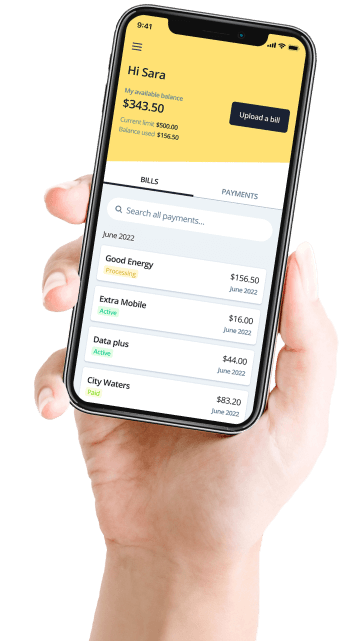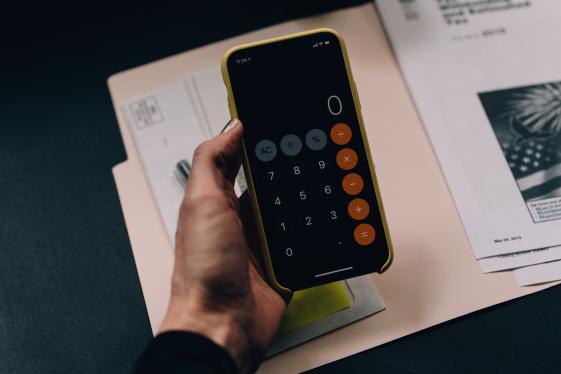So you've decided to take the plunge and start your journey toward property ownership. The first step? Saving for your home loan deposit.
For a lot of us, there’s no better feeling than owning your home. But before you can start homeownership bliss, you’re going to need a home loan deposit. Your home loan deposit is the first contribution you make towards owning your home.
According to Domain’s 2021 House Price Report, property prices experienced an annual rise of 18.6%, with prices jumping 5.8% in December alone. And with the average property price in Australia now sitting at a record breaking $1,101,612, saving for a home deposit can start to feel out of reach.
Between fees and interest rates, there’s a lot to consider when buying your first home. In this blog, we’ll outline all the ins and outs of making the first step towards property ownership, provide tips on how you can save for your deposit faster and get your home loan approved.
How much do I need to save for a home deposit?
The amount you need to save for your home loan deposit will depend on the value of your property. A general rule of thumb is to have at least 20% of the property’s value saved up before you approach the bank for a loan. For example, if the property you’re looking to purchase is $800,000, you’ll need a deposit of $160,000.
Another thing to consider when calculating how much deposit you’ll need for a home loan is the loan-to-value ratio (LVR). Your LVR is the loan amount divided by the property’s purchase price. Using our previous example, if you purchase an $800,000 and you have a $640,000 loan, your LVR would be 80%.
Calculating your deposit amount can be difficult, as property prices fluctuate depending on the market. To give yourself the most accurate goal, try to save the average amount properties within your price range sell for.
Can I buy a home with less than a 20% deposit?
Yes, you are able to purchase a property with a deposit of less than 20%. This is commonly referred to as a low deposit home loan. According to figures from CoreLogic, it takes the average single first homebuyer 8.3 years to save a 20% deposit in New South Wales alone, so it’s not surprising that many Aussies look to apply for low deposit home loans. However, there are a few things to be aware of.
Purchasing a property with a deposit smaller than 20% means having to pay higher interest rates. This is because lenders often see borrowers with smaller deposits as higher liabilities, so the higher rates are to safeguard themselves. A smaller deposit also means Lenders Mortgage Insurance (LMI). LMI is a type of insurance a lender charges a buyer to ensure they aren’t out of pocket if you default on your loan. The amount you’re charged depends on the lender and the amount you are borrowing, though there are online calculators that can give you a rough estimate of how much you could be paying. You can either choose to pay LMI upfront or have it added to your home loan, but this will mean having to pay interest on it.
How can I avoid paying Lenders Mortgage Insurance?
It is possible for a buyer with a smaller deposit to avoid LMI and get access to better interest rates by having a guarantor. A guarantor is someone who acts as security against the loan, helping a borrower hit that 20% mark and purchase their first home. Typically guarantors are a borrower’s parent or legal guardian, although it can be anyone over the age of 18.
While there’s no doubt having a guarantor can help you break into the property market, there are some risks to consider. As your guarantor will act as security for your home loan, if you were to miss a repayment or continuously default on your loan, the guarantor will then become liable to make the payments. If you are thinking of asking a parent, guardian or family member to be your guarantor, make sure they’re comfortable with the potential risks before signing the dotted line.
How to save for a home loan deposit
With the average first home buyer needing just over eight years to save for a home loan deposit, getting smarter with how you use your cash is essential. Whether you’re currently on or about to start your savings journey, we’ve got four tips on how to save money for a home loan deposit.
Open a home loan deposit savings account
Since you’ll most likely be saving for your home loan deposit for a while, it might make sense to keep the money in a designated savings account. Doing this will give you a clear picture of where you’re at with your savings goal, compared to if you were keeping the funds in your regular savings account. Keeping the money in a separate account will also remove the temptation to dip into your savings.
Just make sure you’re sticking your savings into a high interest savings account, so you can hit your goal all the more faster.
Reduce your spending wherever possible
With home loan deposit amounts hitting the six figure mark, it’s important to start cutting costs wherever possible to get you to that amount faster. Review your monthly budget to determine if there are areas where you can reduce your spending or cut them out altogether. Depending on your lifestyle, this might mean cutting down on online shopping, ditching that gym membership you no longer use or setting a limit on the number of times you eat out in a month.
Pick up a side hustle for extra income
One way to get to your home deposit goal quicker is to pick up a side hustle for extra income. This could include things like freelancing if you have a specific skill, such as video editing, writing or photography or even renting out your car on rideshare services. Another way to pick up some extra cash is to sell items you no longer need or use. Platforms, like Facebook Marketplace and Gumtree, make this easy to do and can give you access to a wider range of people.
Round up your everyday spending
The key to getting to your home loan deposit goal faster is by making sure any extra cash lying around is saved instead of spent. One way to do this is to round up your purchases using roundup tools. These are commonly special features banks offer within their apps, where every purchase is rounded up to the nearest dollar and deposited into your savings account. For example, if you bought a coffee for $3.50, the purchase would be rounded up to $4.00 and would automatically transfer 50 cents to your savings account.
While this might not seem like much, it’s important to remember that every dollar counts in getting you to that home loan deposit amount.
Tips for getting your home loan approved
As you’ve probably gathered, saving for a home loan deposit is no mean feat. In order to get approved, first home buyers these days need to do more than just come up with a hefty deposit. To better your chances of getting approved, have a read of our four quick tips for homeownership bliss.
Have proof of genuine savings
When determining whether you’re capable of making repayments each month, a lender evaluates your entire financial situation, including your ability to save. You’ll need to show a potential lender you can be responsible with money and regularly save, as they may ask to look at recent bank statements. In this case, try to have at least proof of frequent contributions to your savings account for around three months.
Ditch debt
If there’s one thing that raises eyebrows when it comes to lending, it’s debt. Personal debt, like credit cards and personal loans, are a big red flag to lenders, as they are recognised as liabilities on your application. Depending on the size of your debt, a lender might believe this will impact your ability to make repayments to your home loan.
Before you get ready to submit your home loan application, make sure to get on top of your debt first. If you don’t have a serious amount of credit card debt, it still might be worth lowering your credit limit or ditching the card altogether to better your chances of approval.
Investigate grants you may be eligible for
With rising property prices making it difficult for first home buyers to enter the market, the government has stepped in to provide a range of assistance programs. For instance, if you live in New South Wales, there is the First Home Owners Grant (FHOG), which was launched in 2000. The FHOG offers $10,000 to homeowners purchasing a new home valued at less than $600,000 or building a new home valued at $750,000.
There’s also the First Home Loan Deposit Scheme (FHLDS) that was introduced in 2019. As we said earlier, if a buyer doesn’t have a 20% deposit saved up, they will have to pay LMI. Under the FHLDS, a person can purchase a home with a deposit of as little as 5% and the Federal Government will act as a guarantee for the remaining deposit. Bear in mind that there are only 10,000 positions available at a time, with these positions renewing every financial year.
While these schemes are able to provide financial assistance to struggling first home buyers, there are a few eligibility requirements you must meet before being approved, so be sure to always read the fine print before applying.
Pay every bill on time
Another way to show your lender you’re fantastic with managing your money is to pay your bills on time. When you’re in the approval process, potential lenders will dig into your credit history to find any marks on your file, like unpaid or late payments on bills. One easy way to guarantee every bill is paid on time is to sign up to Deferit, the budgeting app that pays your bills.
Deferit pays your bills upfront and in full, meanwhile, you enjoy the flexibility of paying it back over 4 fortnightly instalments. The platform not only makes bills easier to manage but you’ll be given complete control over your payment dates. You can reschedule payment dates for free and get a balance of up to $2,000 to pay bills, which allows you to track and manage multiple bills in one convenient location.
Home loan pre-approval: What do I need to know?
Home loan pre-approval or conditional approval/approval in principle is a process where a lender provides an estimate of your borrowing capacity, if you meet certain criteria. These conditions might include getting debt-free or supplying specific documentation, like the property’s value.
Having pre-approval gives you the confidence to attend open houses knowing how much you can afford to spend, meaning you won’t waste time on properties outside your price range. Sellers will also take you more seriously when you make offers, as you’ve already locked in an agreement with the lender.
The first step to getting pre-approved is to compare and choose a lender based on what best suits your needs. Once you’re happy with your pick, get your finances in top shape and submit a pre-approval application. During this time, the lender will assess things like your credit score, your income, expenses and any debts you have. If the lender deems you eligible for the loan, they will grant you pre-approval.
Just keep in mind that not all lenders give pre-approval, so be sure to double check the details before applying.
Ready to start saving for that home loan deposit? Give yourself one less thing to worry about by uploading your bills to Deferit! Head on over to our home page to create your account, or if you’d like to learn more about money management, check out the rest of our blog.








